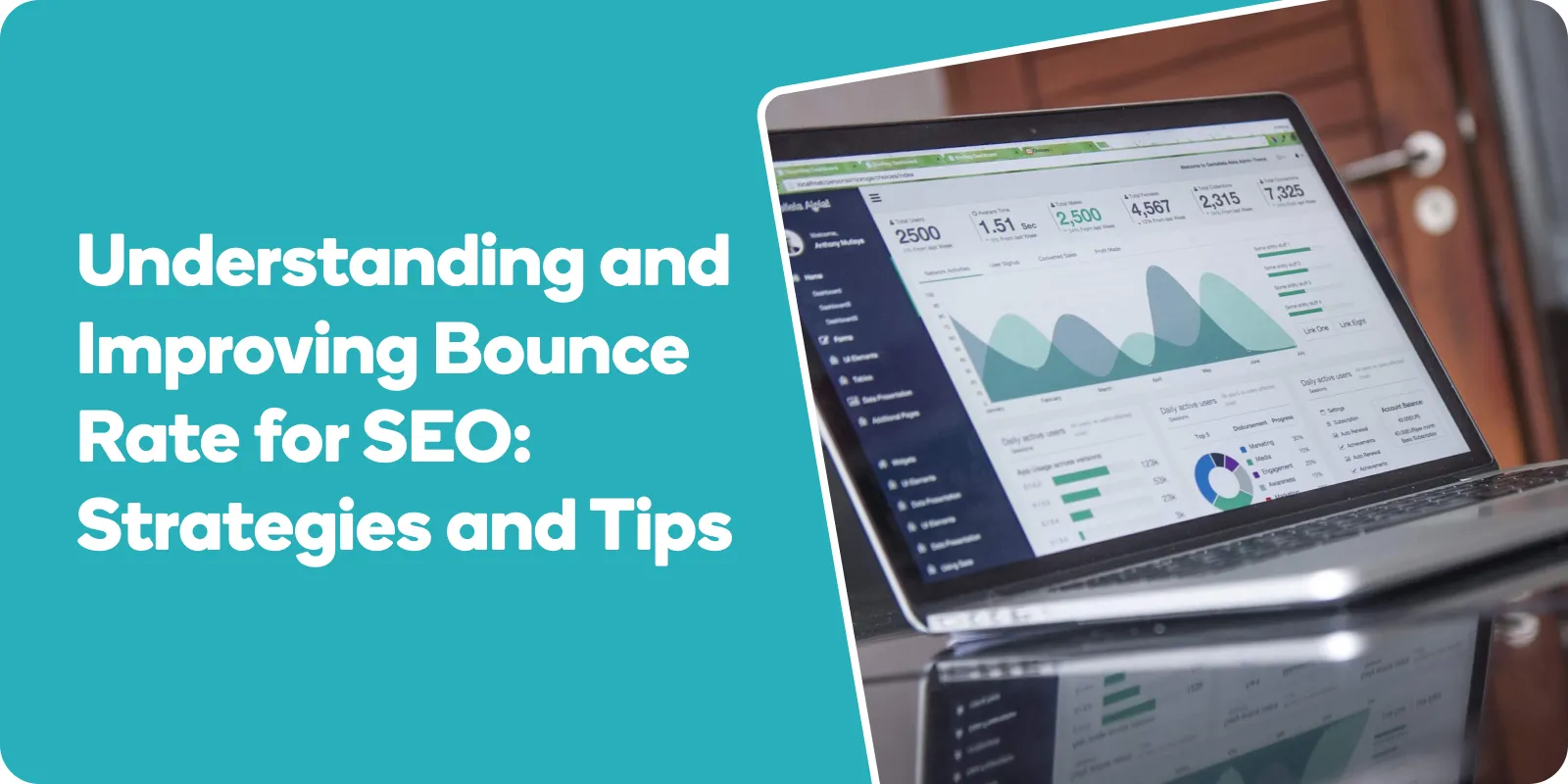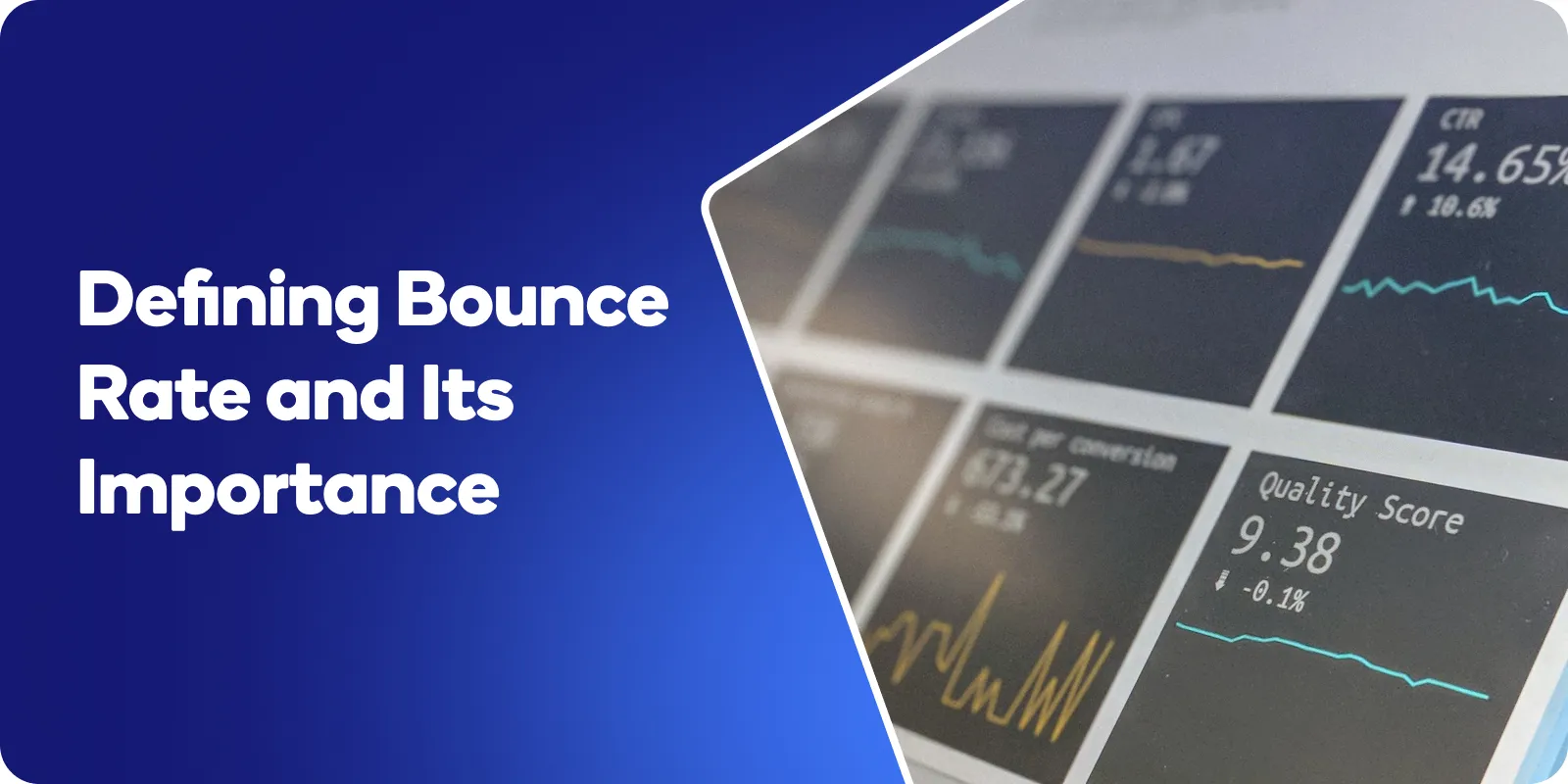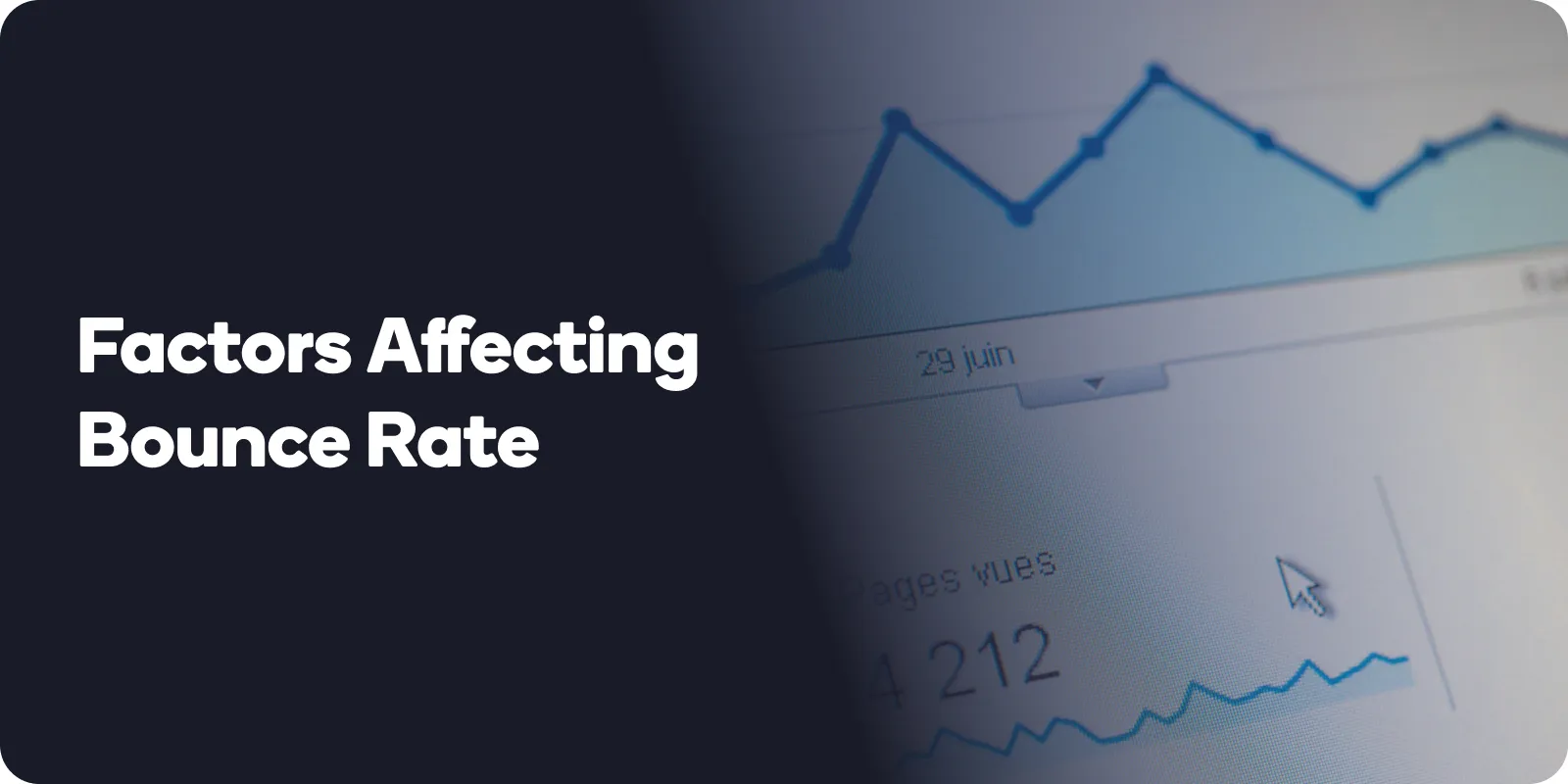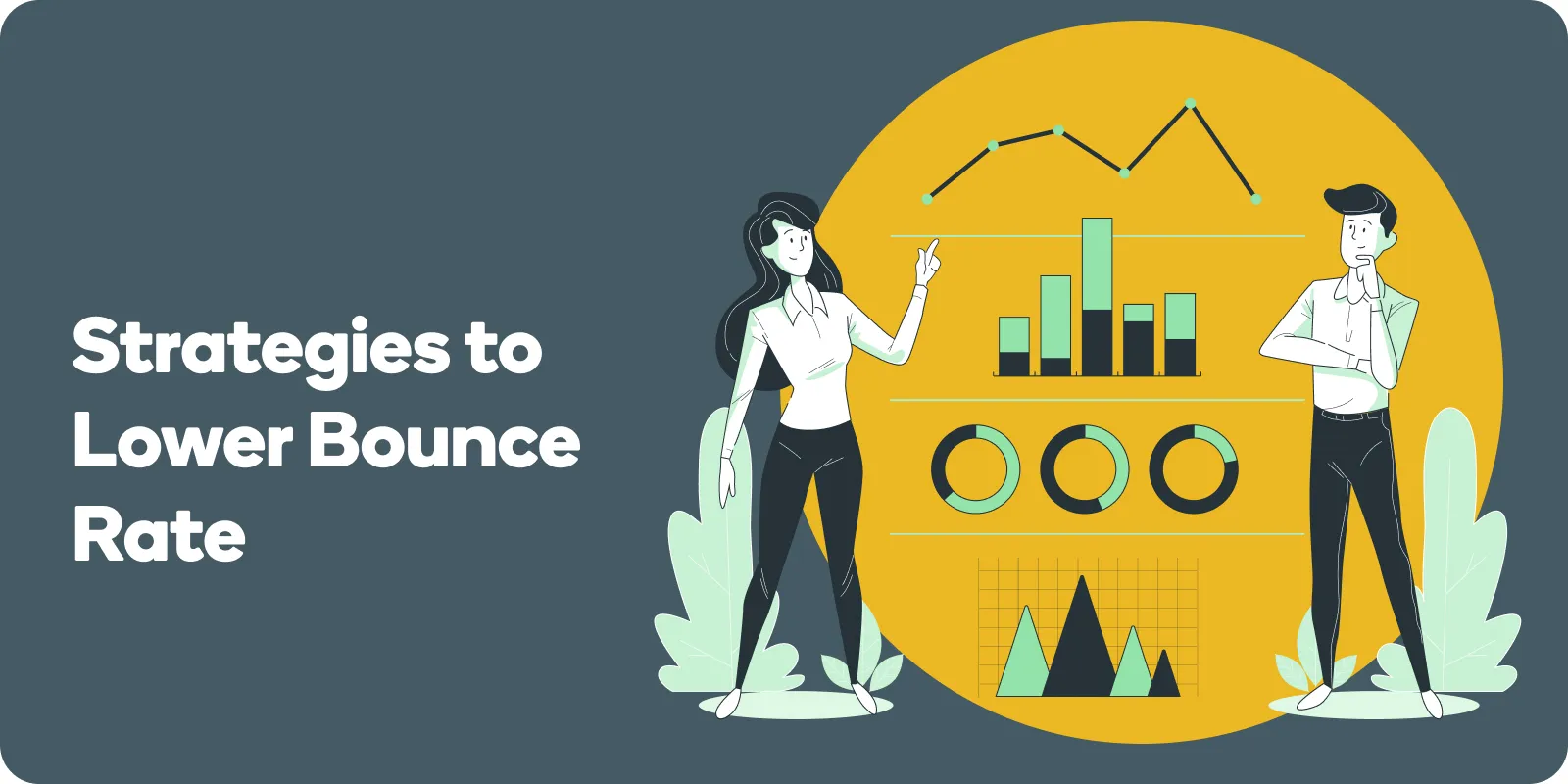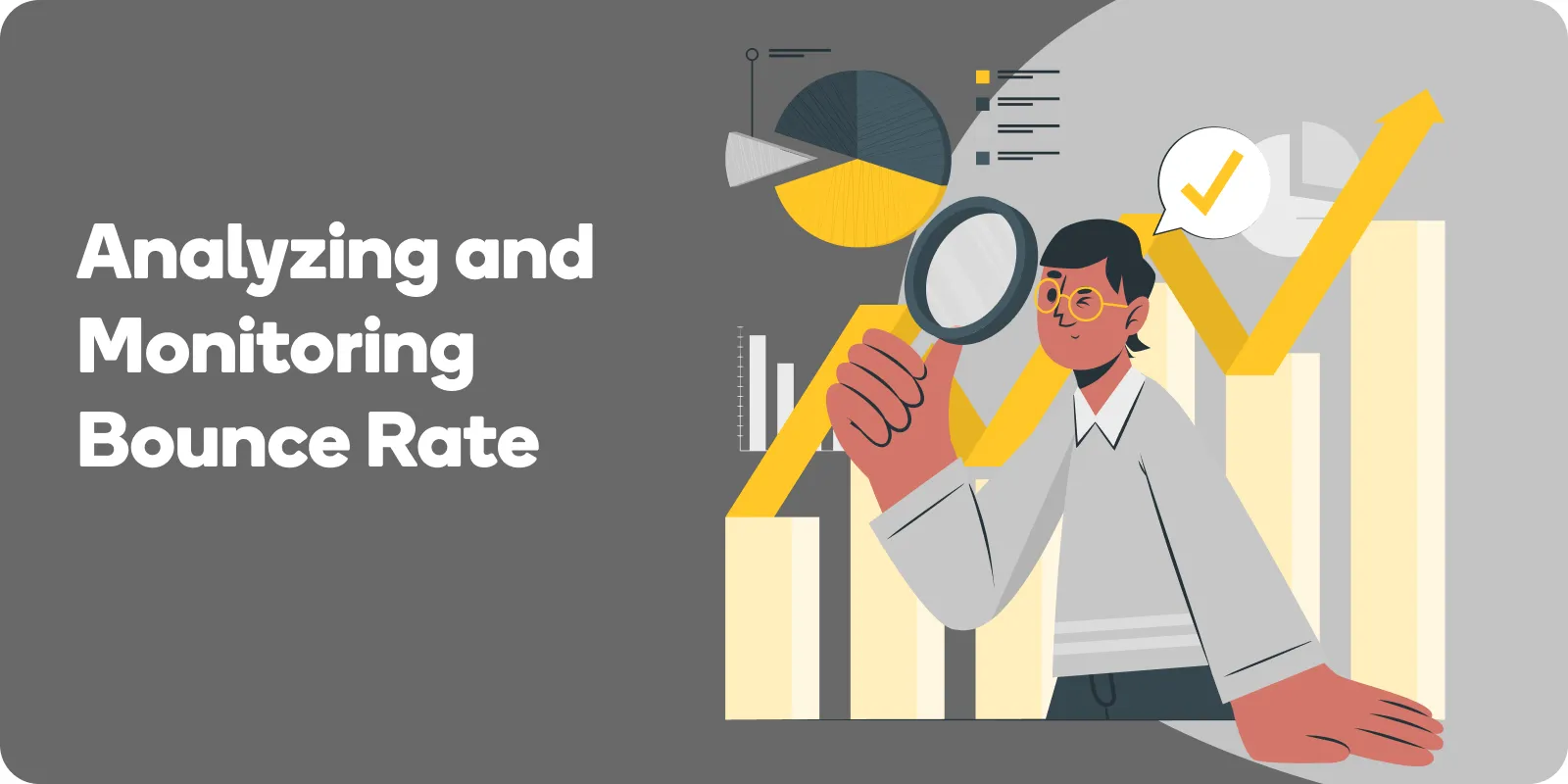In this comprehensive guide, we’ll delve into the intricacies of understanding and improving bounce rate for SEO, its importance, and effective strategies to lower it.
Buckle up and get ready to transform your website into an engaging and SEO-friendly powerhouse.
Defining Bounce Rate and Its Importance
Bounce rate is a crucial metric for gauging website engagement, as it indicates the proportion of visitors who leave a site without further interaction. A high bounce rate can have a detrimental effect on SEO since it suggests that visitors are not interacting with the content.
In order to improve your bounce rate, it is recommended to enhance user experience, optimize content quality, establish internal linking, and analyze and monitor bounce rate.
What is Bounce Rate?
Bounce rate is the percentage of visitors to a site who navigate away after viewing only one page.
To calculate the bounce rate, you simply take the average number of bounces across all pages divided by the total number of visits across all those pages within the same period.
The average bounce rate varies significantly across industries due to the distinct nature of each website. This metric is influenced by factors such as industry and niche, website type, and traffic sources.
To better understand and manage website bounce rate, Google Analytics can be configured to track various interactions, such as playing a video, clicking a button, or completing a download.
By analyzing these interactions and implementing strategies to improve readability, like employing bullet points, subheadings, and appropriate font sizes, you can create a more engaging and user-friendly website.
Remember, a well-crafted meta description can also make a difference in reducing bounce rate, as it provides users with a clear overview of the content they will find when they click on a link.
Why Does Bounce Rate Matter?
A high bounce rate may suggest that a website’s content or design is not sufficiently appealing or pertinent to visitors.
Focusing on high-traffic, high-value keywords can enhance a site’s bounce rates, as visitors are more likely to engage with relevant content.
Analyzing the bounce rate of your pages can provide insights into potential paths of improvement, such as identifying slow load times, navigation issues, or content that is not relevant to the user.
Decreasing bounce rate is essential for enhancing user engagement and increasing conversion rates. Factors such as page load time, content quality, and user experience are critical for reducing bounce rate.
For instance, as page load time increases, there is a corresponding increase in the probability of a user bouncing.
A clear call to action (CTA) can also be beneficial in reducing bounce rate by guiding visitors to take a specific action and preventing any confusion.
Bounce Rate and SEO Connection
There is an indirect relationship between bounce rate and SEO performance. Although bounce rate itself is not a ranking factor in Google’s algorithm, a high bounce rate can be indicative of other SEO elements that require attention.
For example, a high bounce rate might signal that a website’s content or design is not meeting user expectations, which could lead to poor search engine rankings.
It’s worth noting that Google does not use the bounce rate visible on Google Analytics as a ranking factor on search engine results pages (SERPs).
However, it’s still essential to address the factors that contribute to a high bounce rate, as improving user experience, optimizing content, and establishing a clear call-to-action can indirectly boost your website’s SEO performance.
Ultimately, a lower bounce rate can lead to better rankings and increased organic traffic to your site.
Factors Affecting Bounce Rate
Several elements can have an impact on bounce rate, such as page load time, content quality, user experience, titles, visual appeal, keyword relevance, technical issues, and the number of forms or the amount of information requested.
Among these factors, industry and niche variations, website type, and traffic sources play a significant role in determining a website’s bounce rate.
Industry and Niche Variations
The bounce rate of a website can vary depending on the industry or niche it belongs to. For instance, a news website may have a higher bounce rate than an eCommerce website, as users tend to consume content on news websites without necessarily engaging further.
On the other hand, visitors to an eCommerce site are more likely to browse multiple pages and interact with the website before leaving.
Understanding the unique characteristics of your industry or niche is essential when developing content and designing your website, as it can significantly impact your bounce rate.
By tailoring your website’s design and content to cater to the specific needs and preferences of your target audience, you can create a more engaging user experience and ultimately lower your bounce rate.
Website Type and Traffic Sources
Website type and traffic sources can also influence bounce rate performance. For example, traffic sources such as email and referral traffic generally have a lower bounce rate, while display ads and social media traffic tend to have a higher bounce rate.
This could be due to the quality of traffic or the relevancy of the content being presented to users from different traffic sources.
Understanding how each traffic source affects bounce rate can help you identify areas for improvement and develop strategies to optimize your website for specific traffic sources.
By analyzing and segmenting bounce rate data based on website type and traffic sources, you can gain valuable insights into user behavior and make data-driven decisions to enhance user experience and reduce bounce rate.
Strategies to Lower Bounce Rate
To effectively lower bounce rate and improve user engagement, it’s crucial to focus on enhancing user experience, optimizing content quality, and reinforcing internal linking.
These strategies can not only help reduce your site’s bounce rate, but also increase the likelihood of converting visitors into customers or subscribers.
Enhancing User Experience
Improving website design, layout, and navigation can significantly impact user experience and bounce rate.
For instance, optimizing your website for different mobile devices used, such as smartphones and tablets, can help ensure that all users have a positive experience when browsing your site.
Additionally, incorporating visually appealing elements and interactive features can make your website more engaging and encourage users to explore further.
Another way to enhance user experience is by offering live chat support or displaying a message requesting the user to subscribe to a newsletter when a visitor is about to leave the site.
By providing additional resources and support, you can increase the likelihood that users will stay on your website longer and reduce bounce rate.
Optimizing Content Quality
Content quality is critical for reducing bounce rate, as it can significantly impact a visitor’s experience. To optimize bounce rate, content should be detailed, helpful, and relevant to the target audience’s needs.
Additionally, incorporating headings, bullet lists, pictures, graphs, or charts into content can improve readability.
Keeping your content fresh and up-to-date is also essential for maintaining user interest and reducing bounce rate.
Regularly updating your website with new and relevant content can help ensure that visitors continue to find value in your site and encourage them to explore further.
By consistently providing high-quality content, you can build trust with your audience and establish your website as a valuable resource in your industry or niche.
Strengthening Internal Linking
Optimizing the internal linking structure of landing pages on your website can help guide users through your site and encourage further exploration.
By connecting related pages together and using descriptive anchor text, you can create a more intuitive navigation experience for your users.
Maintaining a balanced distribution of internal links on each page is also crucial for reducing bounce rate. Be sure not to overstuff your content with too many links, as this can be detrimental to readability and give your website a suspicious appearance.
Instead, focus on providing relevant and helpful links that add value to the user’s experience on single page and encourage them to explore your website further.

Award-Winning
Sales Funnel & Website Expert
Ready for Revenue – Not Just “Traffic”?
- Websites that Work: Clean, fast, built to convert – no design fluff.
- Funnels that Sell for You: Step-by-step paths that turn clicks into paying customers.
- SEO That Hunts Buyers: Show up exactly when prospects reach for their wallets.
Analyzing and Monitoring Bounce Rate
Monitoring and analyzing bounce rate data is essential for identifying areas of improvement and making informed decisions to enhance user engagement and reduce bounce rate.
Google Analytics is the most widely employed tool for analysis and monitoring of bounce rate, allowing you to segment data according to different variables and gain valuable insights into user behavior.
Google Analytics and Bounce Rate
Google Analytics enables you to monitor bounce rate performance and pinpoint areas for improvement by tracking bounce rate by page, segmenting data, and setting up custom alerts.
Additionally, the Page Timings report in the “Site Speed” section of Google Analytics can be utilized to evaluate page speed and identify which pages with the highest traffic are also the slowest loading. This information can help you prioritize page optimization and improve user experience.
Segmenting bounce rate data by device type, such as mobile or tablet, can also reveal potential design issues that may be contributing to a higher bounce rate among specific user groups.
For example, if you notice a significantly higher bounce rate among Apple users compared to Android users, this could indicate that your website is not optimally configured for Apple devices and requires further optimization.
Segmenting Bounce Rate Data
Segmenting bounce rate data facilitates the analysis of various variables, such as demographics, device type, and traffic sources.
This can help pinpoint areas that require improvement and optimize the website for an enhanced user experience.
For instance, if you notice a high bounce rate with one gender, it’s essential to ensure that your website is not unintentionally creating the impression that it only caters to the other sex.
By analyzing and segmenting bounce rate data, you can gain valuable insights into user behavior and make data-driven decisions to enhance user experience and reduce bounce rate.
By understanding the unique characteristics of your audience and adjusting your website accordingly, you can create a more engaging and user-friendly experience that ultimately leads to lower bounce rates and improved SEO performance.
Case Studies and Real-World Examples
Real-world examples and case studies can provide valuable insights into the strategies and techniques that have proven successful in reducing bounce rate and improving SEO performance.
These examples illustrate the importance of optimizing website design and content to enhance user experience, as well as the necessity of analyzing and tracking bounce rate data.
Success Stories
Businesses that have successfully reduced their page’s bounce rate and improved SEO performance include Zebra Technologies, which decreased their website’s bounce rates by 45% with customized web experiences.
These success stories demonstrate the potential positive impact that implementing bounce rate reduction strategies can have on user engagement and overall SEO performance.
By learning from these success stories and applying their strategies to your own website, you can enhance user engagement, reduce bounce rate, and improve your website’s search engine rankings.
Remember, the key to success lies in understanding your audience’s needs and preferences and tailoring your website’s design and content to meet those expectations.
Lessons Learned
By analyzing bounce rate case studies, we can gain valuable insights into the factors that contribute to a high bounce rate and the strategies that have proven effective in reducing it.
Page load speed, content relevance, user experience, and website design all play a critical role in influencing bounce rate.
To enhance bounce rate and overall user engagement, website owners should focus on optimizing their website for page load speed, content relevance, user experience, and website design.
By implementing these strategies and continuously monitoring bounce rate data, you can transform your website into an engaging and SEO-friendly powerhouse that attracts and retains visitors.
Frequently Asked Questions
What is a good bounce rate?
A “good” bounce rate can vary significantly depending on the type of website, its content, and the industry it operates in. Generally speaking, a lower bounce rate is often seen as better, because it suggests that visitors are engaging with your site and viewing multiple pages rather than leaving after viewing just one page.
In terms of general benchmarks, a bounce rate between 26% to 40% is considered excellent, 41% to 55% is roughly average, and 56% to 70% is higher than average, but could be acceptable depending on the website. Anything over 70% is typically considered high for most types of websites.
Is a bounce rate of 80% a good thing?
A bounce rate of 80% is generally considered high for most websites. This means that 80% of the visitors to your site are leaving after viewing only one page, without taking any other actions such as clicking a link to another page on your site.
While this might be acceptable for some types of sites that have single-page content, for most sites, it indicates that the site isn’t engaging visitors enough to explore further.
What does a 5% bounce rate mean?
A 5% bounce rate is extremely low and indicates that 95% of the visitors to your site are engaging with your content and moving on to view more than one page. This is usually an excellent sign of a highly engaging website that successfully encourages visitors to explore further.
It’s also worth noting that a bounce rate this low could potentially indicate an issue with the tracking setup on your website, as it’s unusually low.
Is a bounce rate of 40% good?
A bounce rate of 40% is generally considered excellent. This means that 60% of visitors to your site are going beyond the first page they land on and viewing additional pages. This indicates a high level of user engagement and suggests that your site is providing valuable content that encourages visitors to continue browsing.
Is 75% a high bounce rate?
A 75% bounce rate is generally considered high. It means that three-quarters of visitors to your site are leaving after viewing only one page. This could suggest that your website isn’t effectively engaging users, or that the page they’re landing on isn’t meeting their expectations based on their search query.
However, this could also be acceptable for certain types of content or industries.
What is a high bounce rate?
A bounce rate over 70% is typically considered too high for most types of websites. It suggests that a significant majority of visitors are not finding what they’re looking for on your site, or that the site isn’t sufficiently engaging to motivate them to explore further. However, this can depend on the nature of the site.
For example, blogs, news, and events websites can often have a higher than average bounce rate since users often come to read a specific article or piece of information and then leave.
Conclusion
In conclusion, bounce rate is a crucial metric for gauging website engagement and can have a significant impact on your site’s SEO performance.
By understanding the factors that contribute to a high bounce rate and implementing effective strategies to lower it, you can enhance user engagement, increase conversion rates, and improve search engine rankings.
Remember, the key to success lies in tailoring your website’s design and content to meet your audience’s needs and preferences, continuously analyzing and monitoring bounce rate data, and learning from real-world examples and case studies.
With dedication and persistence, you can transform your website into an engaging and SEO-friendly powerhouse that attracts and retains visitors.
